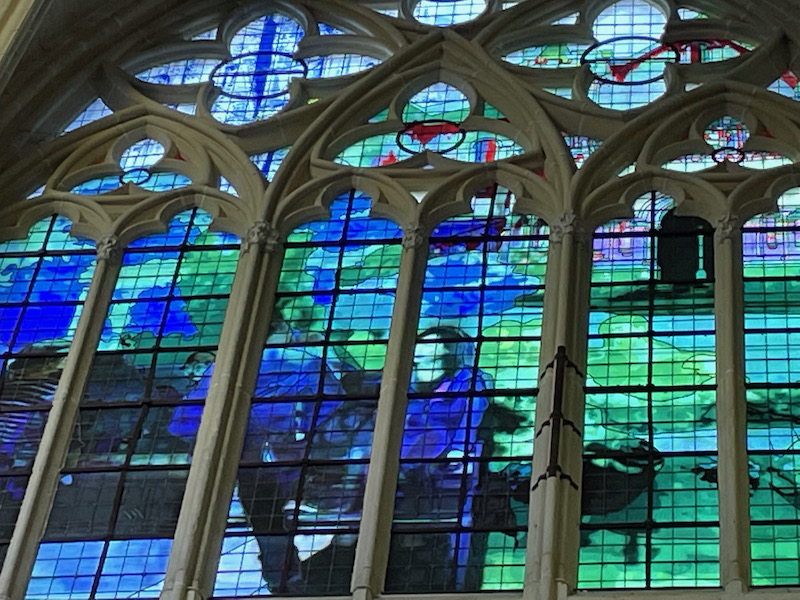Our Blog - Loire Valley Trip - Tours, France
Tours is one of the largest cities in this area, with about 140,000 people but over 1/2 a million in the metropolitan area. Historically, a roman city founded by Emperor Augustus under the name Caesarodunum, it was big enough even at that time to have a Roman Amphitheater. The name evolved in the 4th century when the original Gallic name, Turones, became "Civitas Turonum", and then "Tours". One important figure in the city was Saint Martin of Tours, a bishop who shared his coat with a naked beggar in Amiens. The importance of Martin in the medieval Christian West made Tours, and its position on the route of pilgrimage to Santiago de Compostela, a major centre during the Middle Ages.
A bit of American-linkage ... During World War I (in 1917 to be exact), about 25,000 American soldiers to set up textile factories for the manufacture of uniforms, repair shops for military equipment, munitions dumps, an army post office and a military hospital. The American presence is remembered today by the Woodrow Wilson bridge over the Loire, which was officially opened in July 1918.
We did a fairly quick "tour around Tours" (ha ha ha) one afternoon. There are lots of really nice old houses around, and we started at this one, the doorway to the Hôtel des Trésoriers de Saint-Martin. The doorway was built in the late 15th century and is the last part of a large group of former buildings. There are plenty of flamboyant gothic decorations here, from the arches and tracery to the little leaves on the tops of the windows.
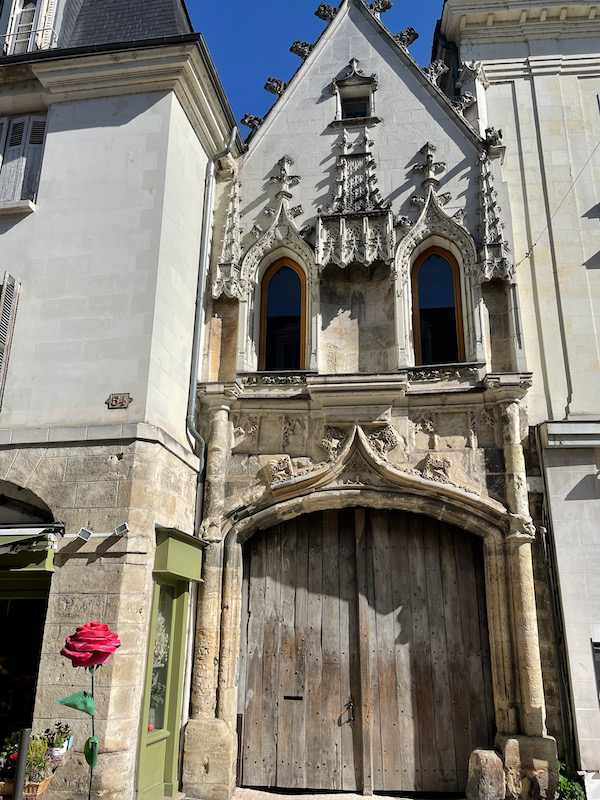
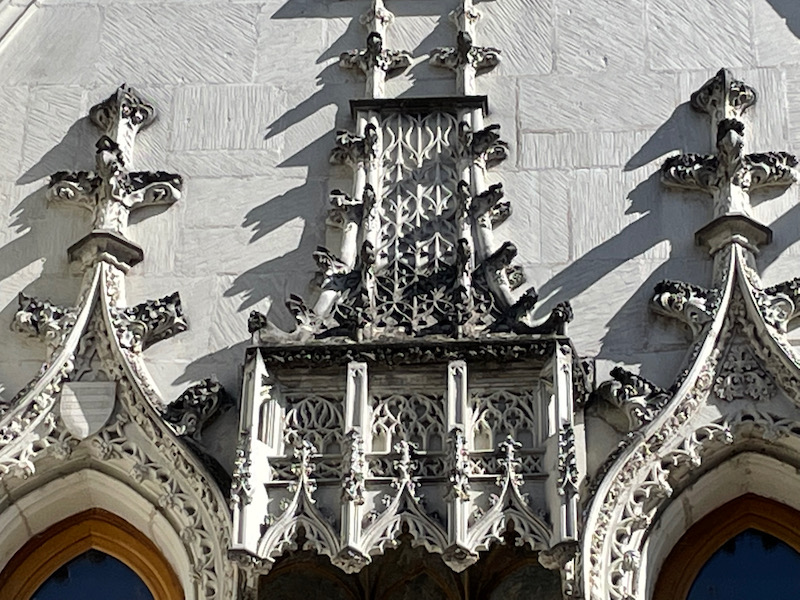
The Hôtel Berthelot, also called Hôtel Jean Briçonnet, is a private historical mansion built in the 15th century. It was originally built for the prominent local family of Berthelot before becoming the property of Jean Briçonnet, the first Mayor of Tours, following his marriage to Jeanne Berthelot. It is interesting to see the different styles, with the half-timbered room on the side of a more Renaissance building with a turret.
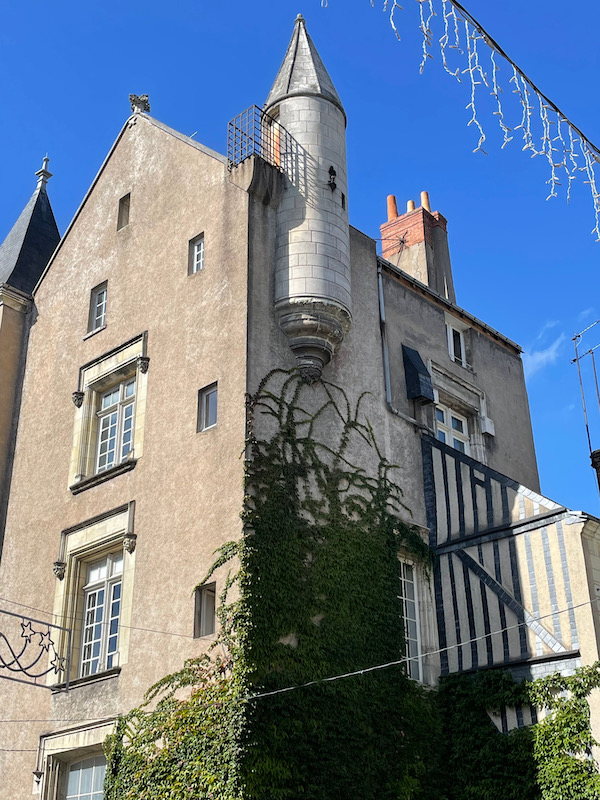
On June 4, 800 AD, the wife of Emperor Charles the Great (also known as Charlemagne), died. Legend says that he buried his wife in (or near) the Basilica of St. Martin although there is no proof of that. This tower, the tower of Charlemagne, is a remnant of the ancient Basilica, that was built in 800 and then rebuilt in 1014. It originally had three towers, two in front and one at the transept, and then two more were added: The Charlemagne tower to the north and the Cadran tower to the south. All the other towers have since come down. The tower was restored in 1962 and is Romanesque in the lower floors, and Gothic above. I have pictures from both sides. Especially in the 2nd picture, you can see how it fit into the church.
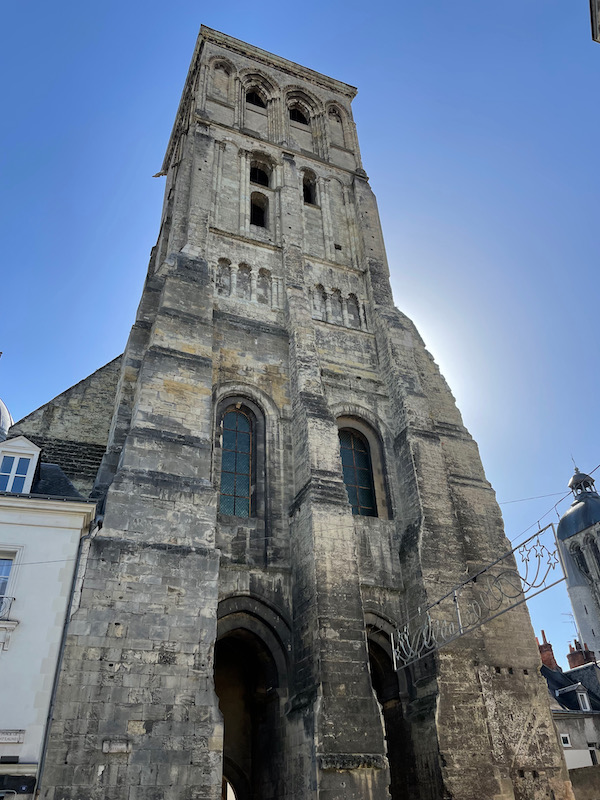
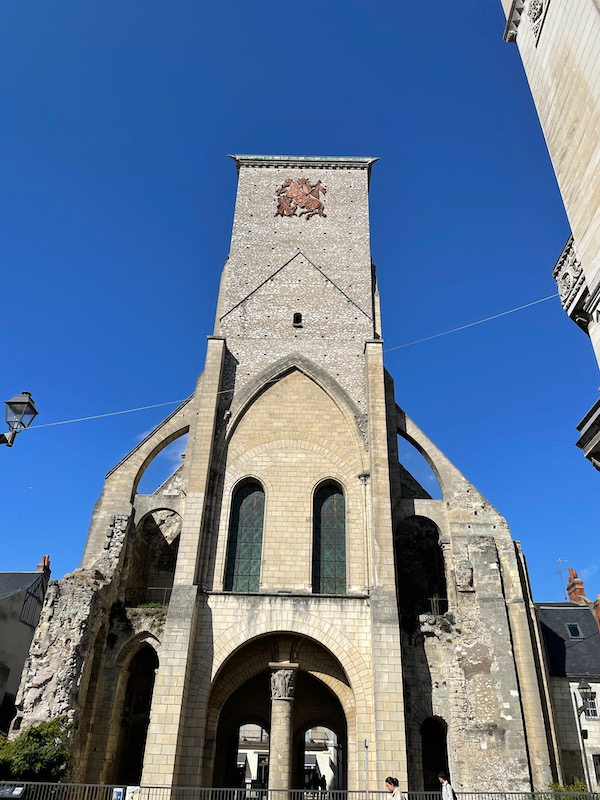
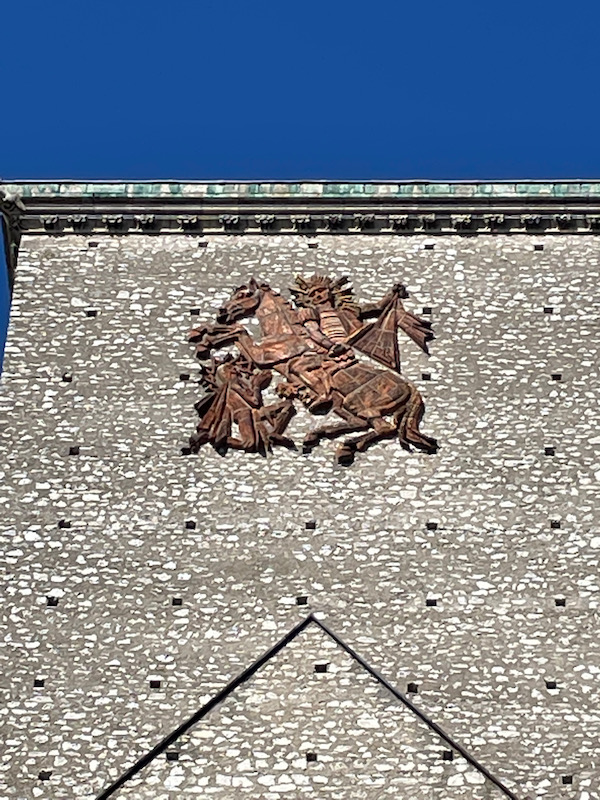
I mentioned the Charlemagne Tower was part of the Basilica of St. Martin, but it was not part of "this" Basilica of Saint Martin. After the burial of Saint Martin in 397, several buildings had covered his tomb: a small chapel built in 437, then a first basilica in 470. This building burned several times a larger Basilica was built here in 1014. The Charlemagne Tower is the only part of the Basilica that was NOT torn down under the French Revolution. The new Basilica was built between 1886 and 1902 in a neo-Byzantine style. Above the dome is a statue of Saint Martin, which was recently restored and is quite shiny now.
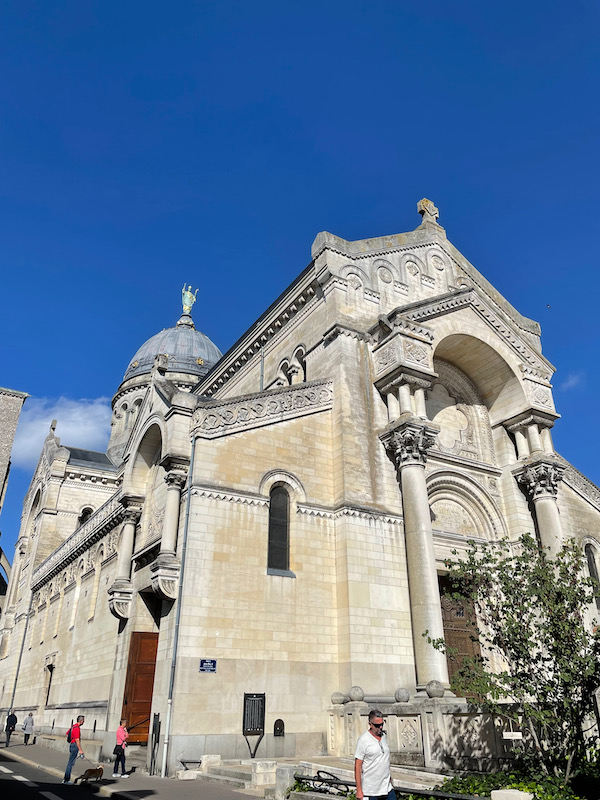
A few pictures of the interior, although I didn't find it all that interesting. It has some nice decoration in the cupola above the altar.
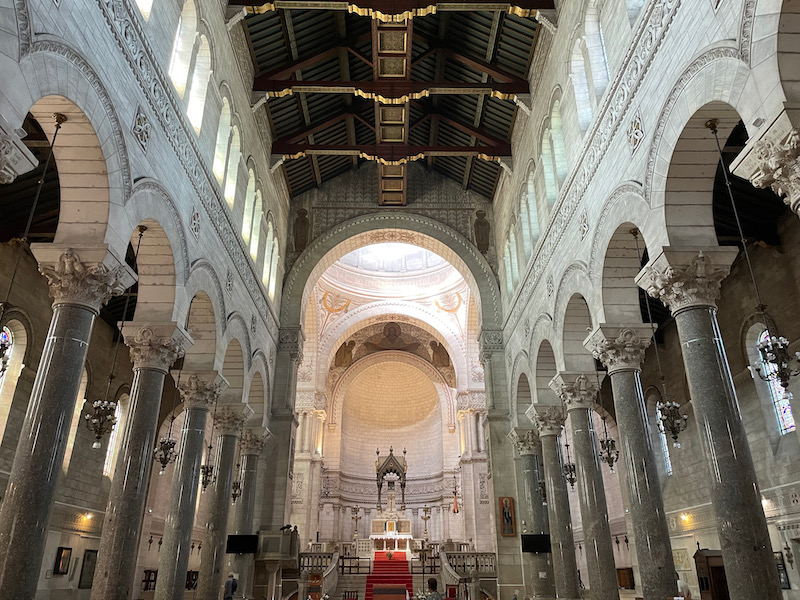
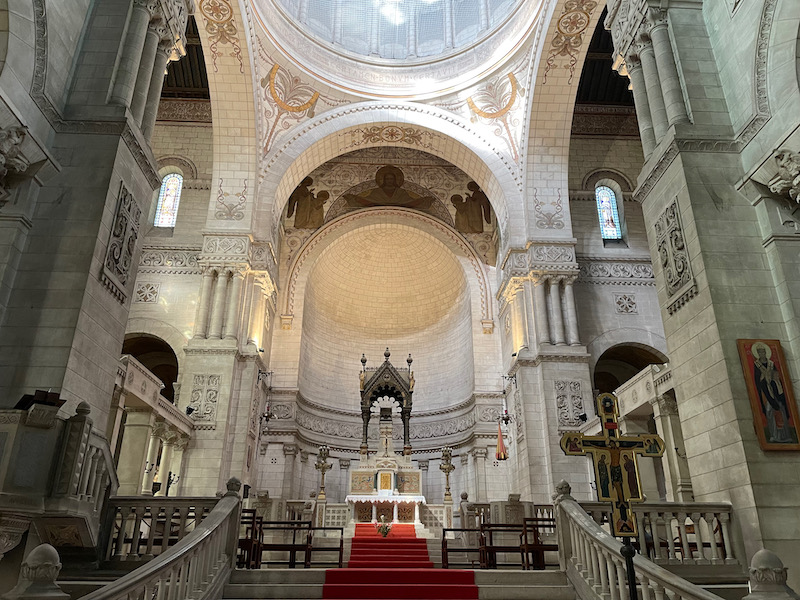
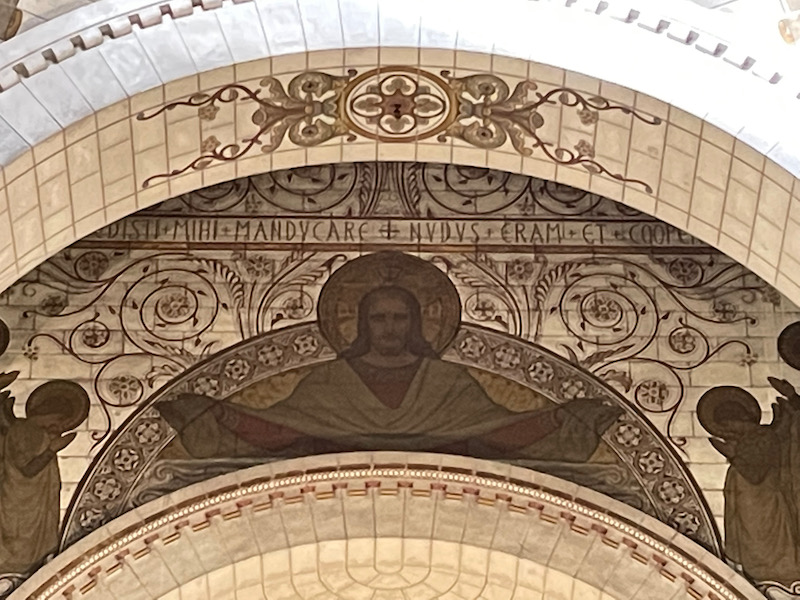
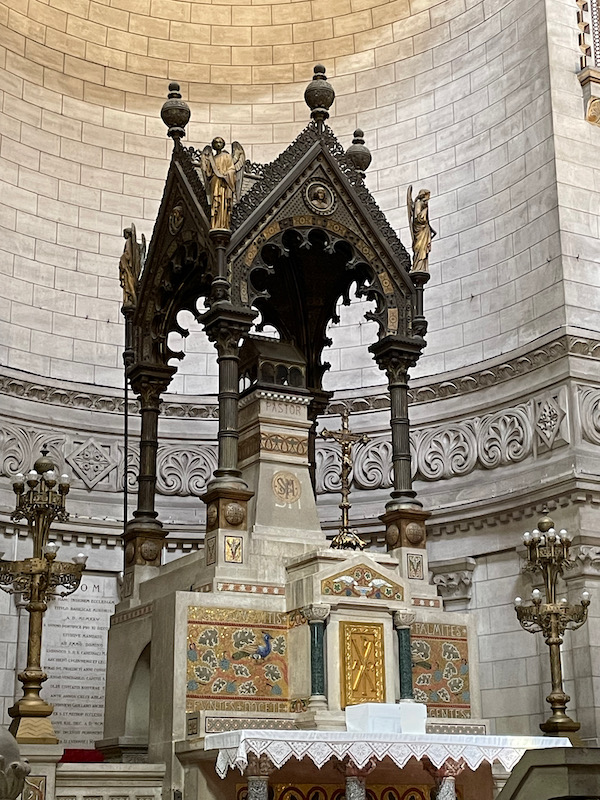
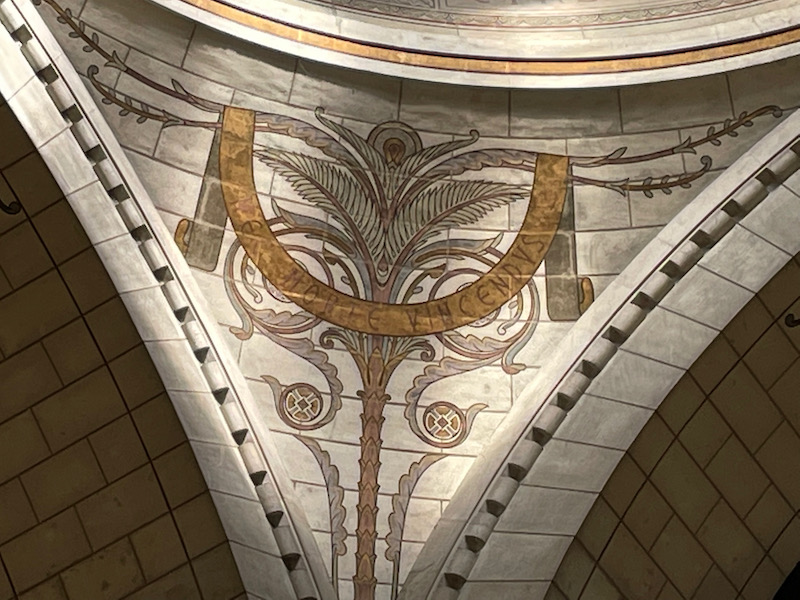
The tomb of Saint Martin was recovered from the wreckage of the old church and is now in the crypt of the Basilica.
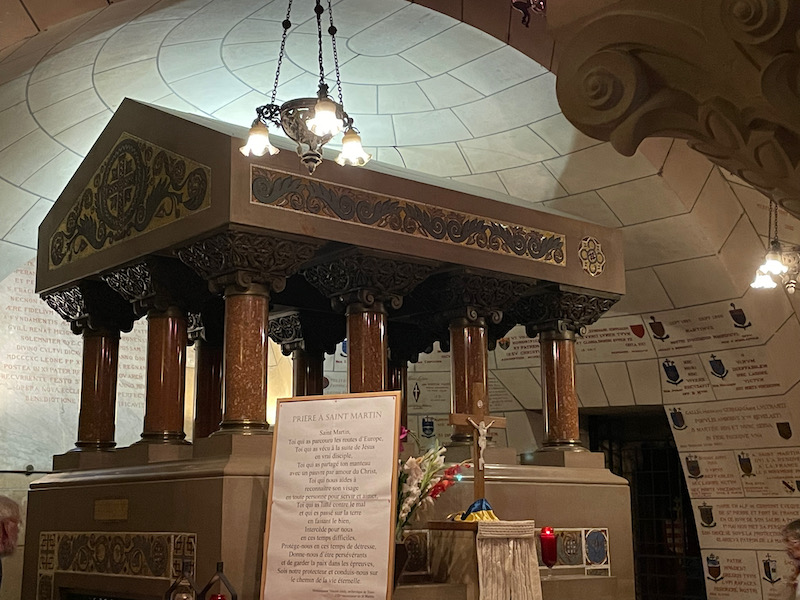
The Hôtel Goüin was built in the 15th century and was the property of René Gardette, a descendant of a family of silk merchants from Tours. The façade was updated in the 16th century to add a porch and loggia. The name Goüin comes from a wealthy family of Breton bankers who purchased the building in 1738. In 1944 during WWII, the building was almost entirely destroyed by bombs leaving only the façade intact.
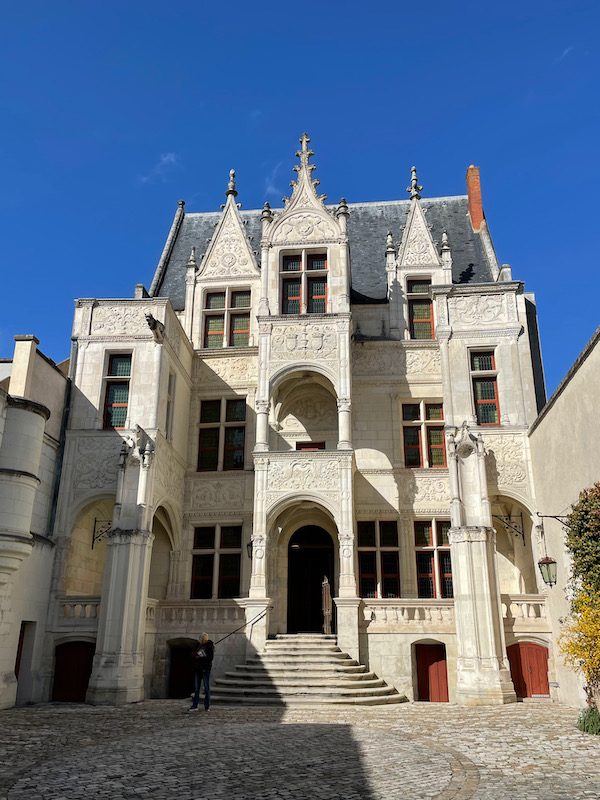
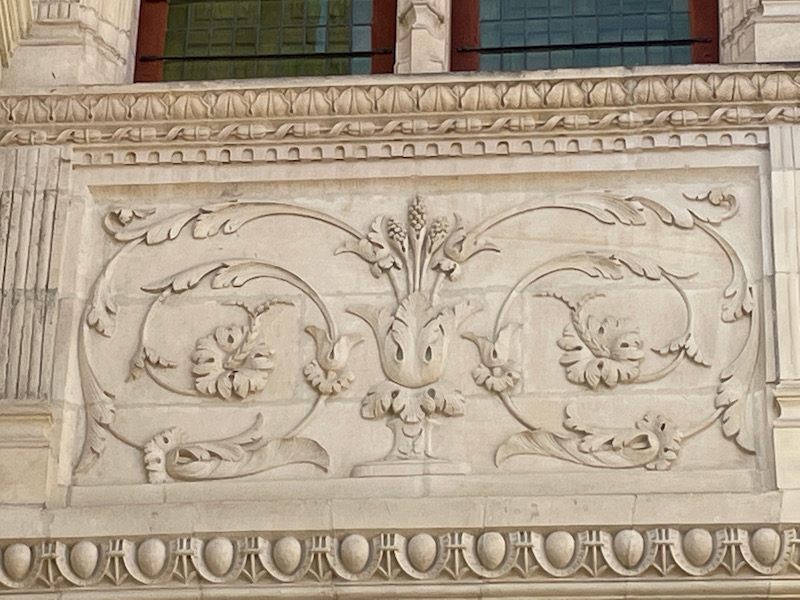

The Maison du Croissant, meaning House of the Crescent (not House of the breakfast pastry) is a nice example of a Medieval French mansion. Dating from the end of the 15th century, the large bourgeois house is in the part of town where the silk workers lived, who settled in Tours around 1470 at the behest of King Louis XI. You can see the different in the "cob", what is between the wood frames in the half-timbered house ... the front is brick(updated in 1962) while the side remains the original.
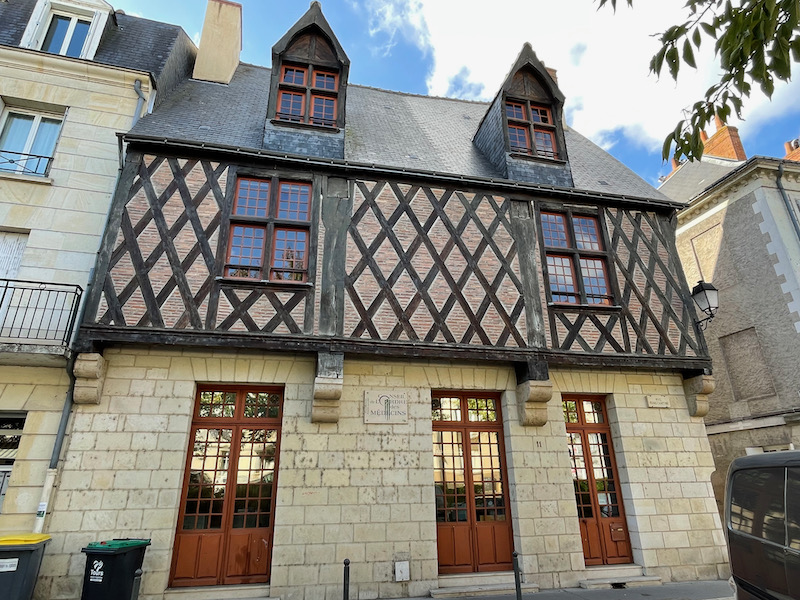
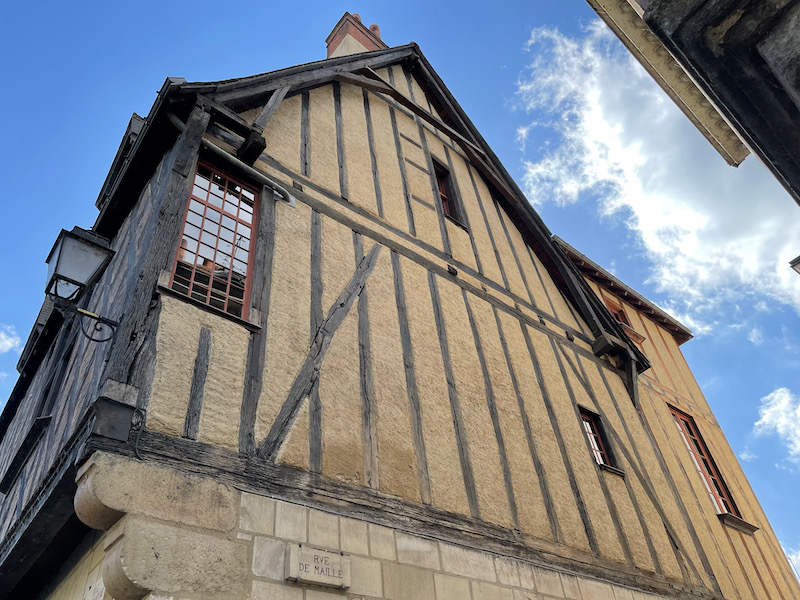
Another old house, this one from late 15th/early 16th century. You can see signs of a Flemish influence with the stepped-gable along with other more traditional decorations.
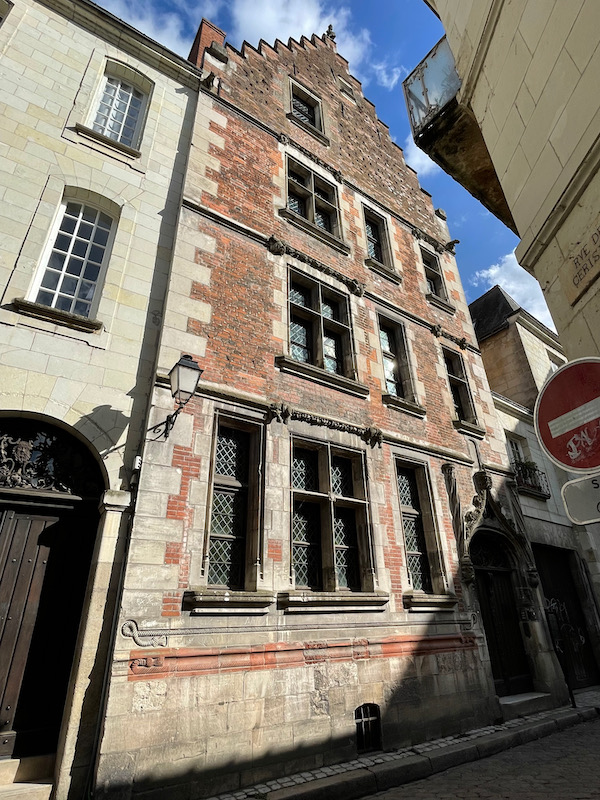
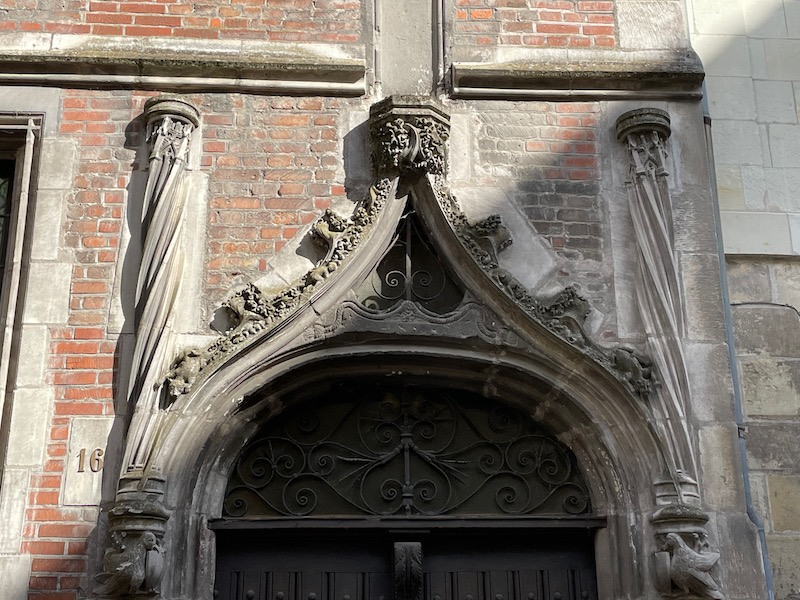
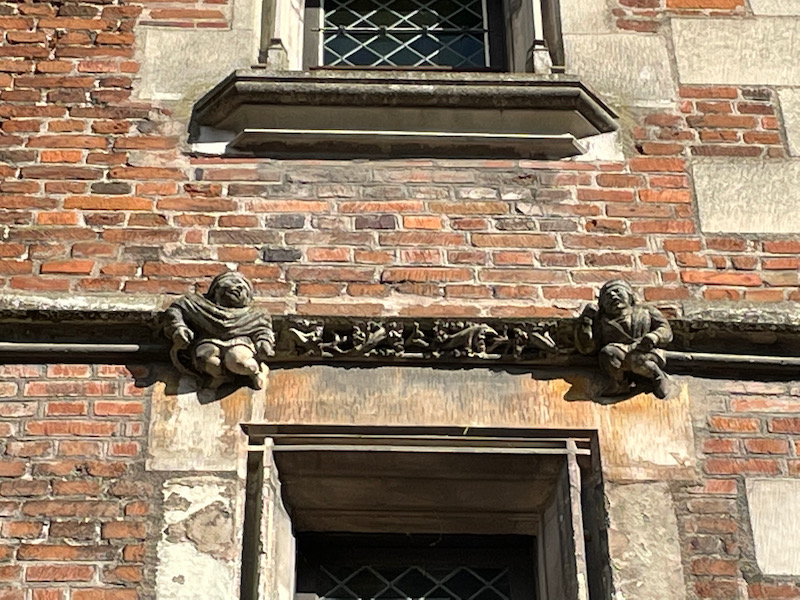
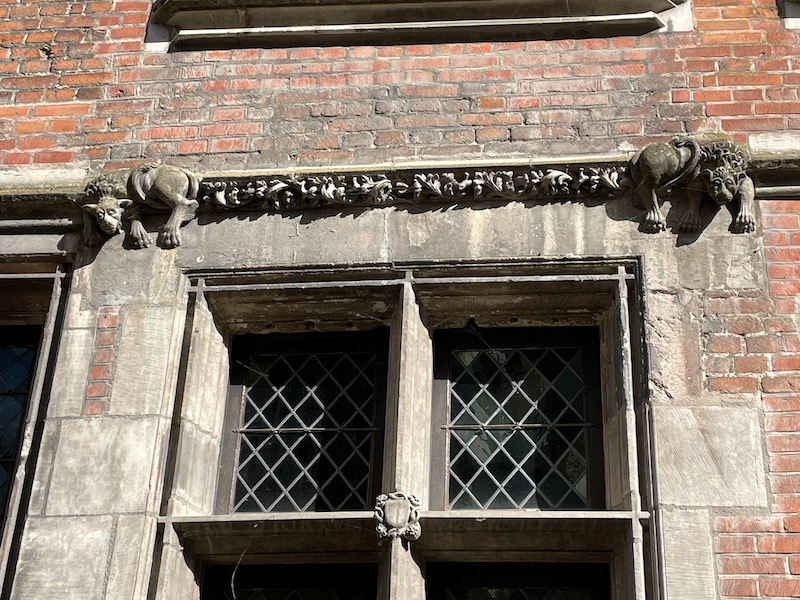
The most touristy place in Tours is the Place Plumereau. Not only popular for visitors, it is also a favorite watering hole for students and the locals. It is in the center of the Saint-Martin district of the city, a very historic area of Tours old town. The square is lined with half-timbered houses and mansions with Renaissance and Romanesque facades from the 15th century.
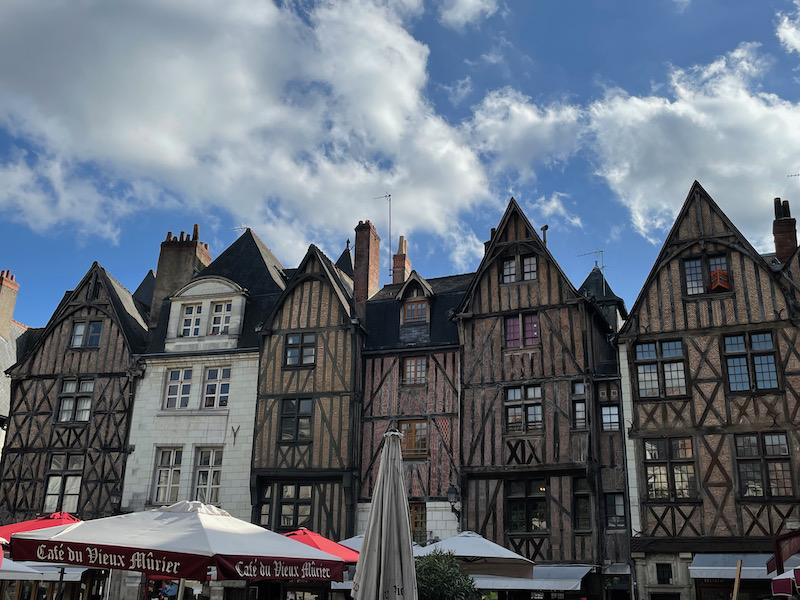
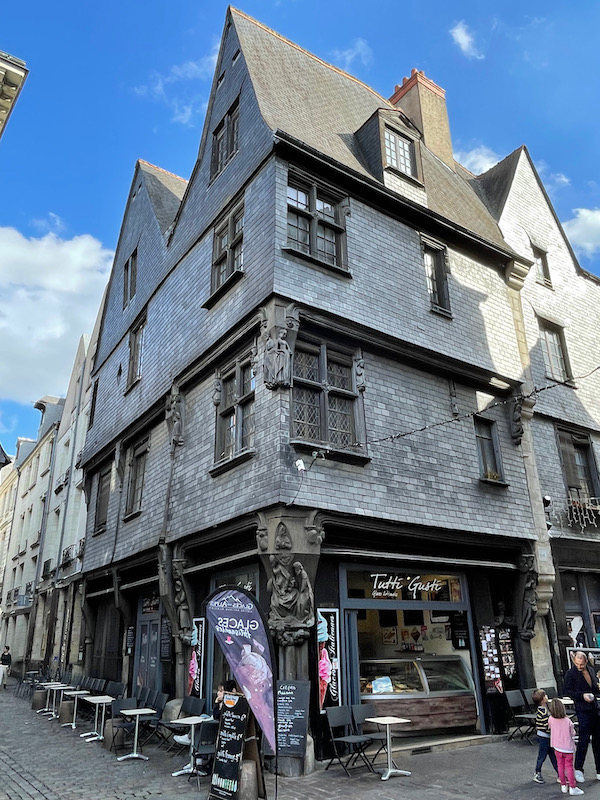
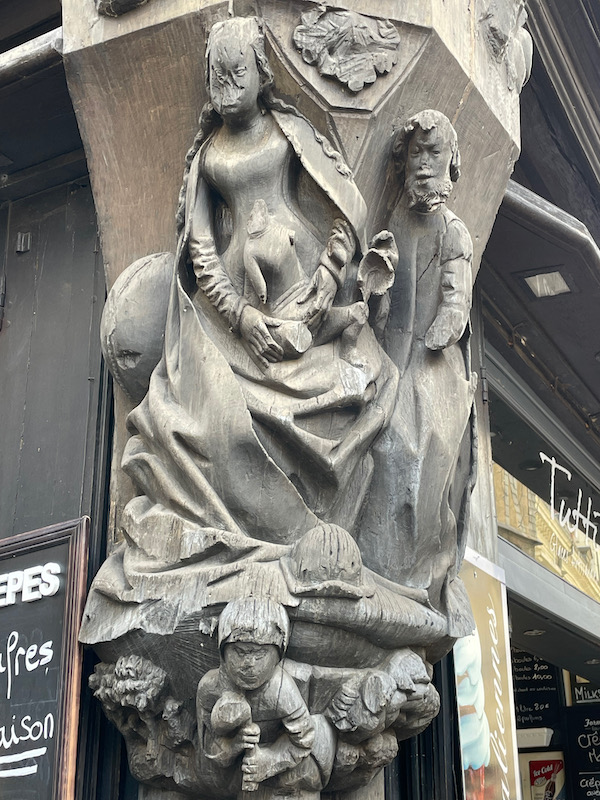
There is something "called" a château here, but it really isn't one anymore. In May 1429, Joan of Arc was received here by Charles VII, shortly after she had saved Orléans from the English. The 11th-century chateau, at that time, was a traditional royal residence. Now, only 2 of the towers of the original building remain. The building in the middle was built in the 18th century.
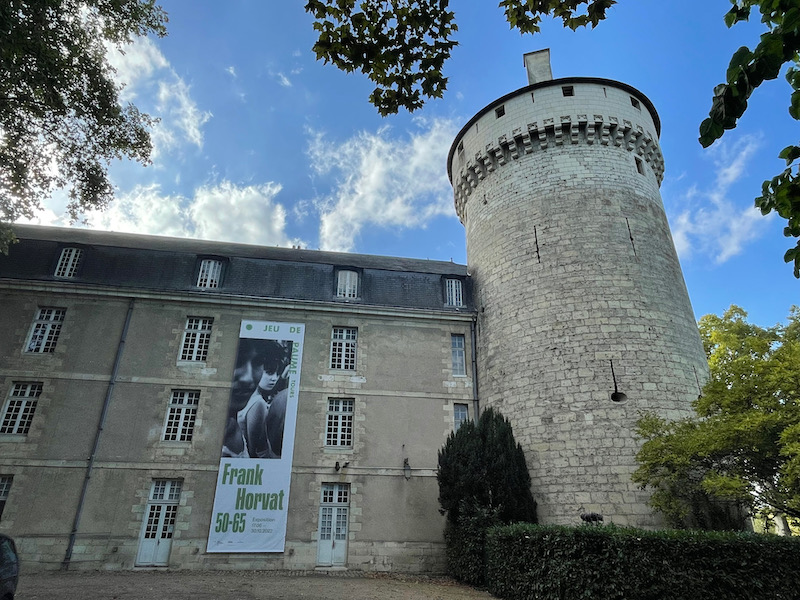
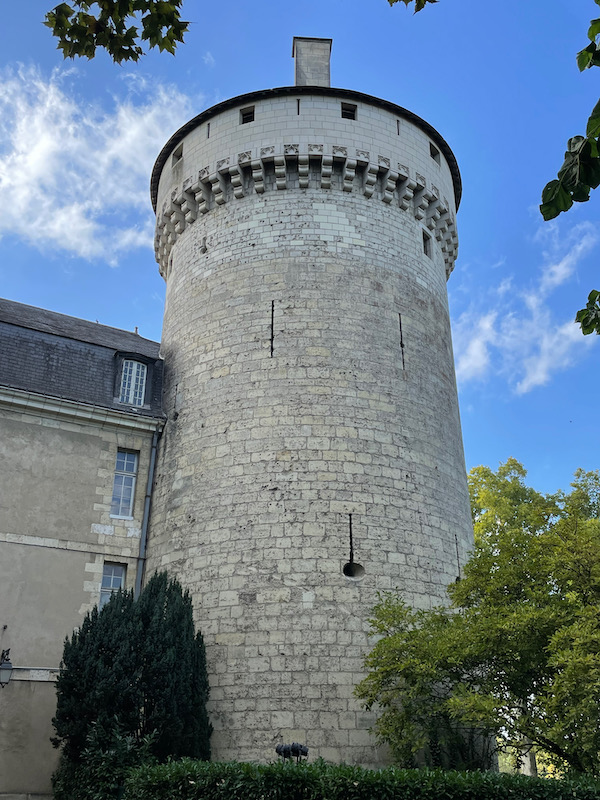
And last on the tour was the Cathedral de Tours, and it was definitely worth the wait. The cathedral was dedicated to Saint Gatianus in 1356 but it was not the first church on the site. The first was dedicated to St. Maurice and built by Bishop Lidorius in 371. That church burned in 558 and was rebuilt by Gregory of Tours in 590. In 1160, a new structure was erected in the Angevin style. This one burned before it was even finished. Work resumed in 1220 but work was interrupted by the Hundred Years War, The nave was finally finished in the 15th century and the towers in the 16th century. A major restoration started in 1993 and you can actually see the difference in color between the restored and not-yet-restored parts.
This is another church in this area where the tympanum over the entry doors is not statues depicting scenes from the bible, but instead, stained-glass windows within carved stone Gothic tracery. I added what the stained glass looks like from the inside here as well.
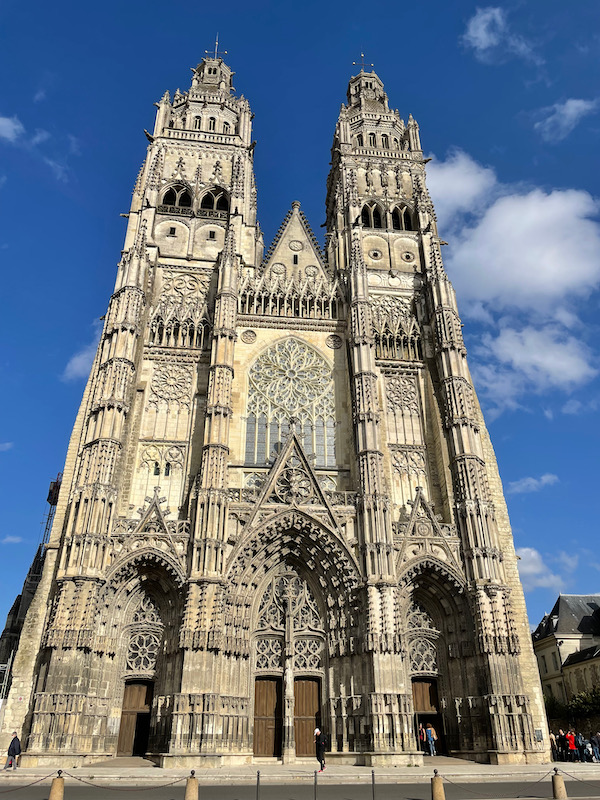
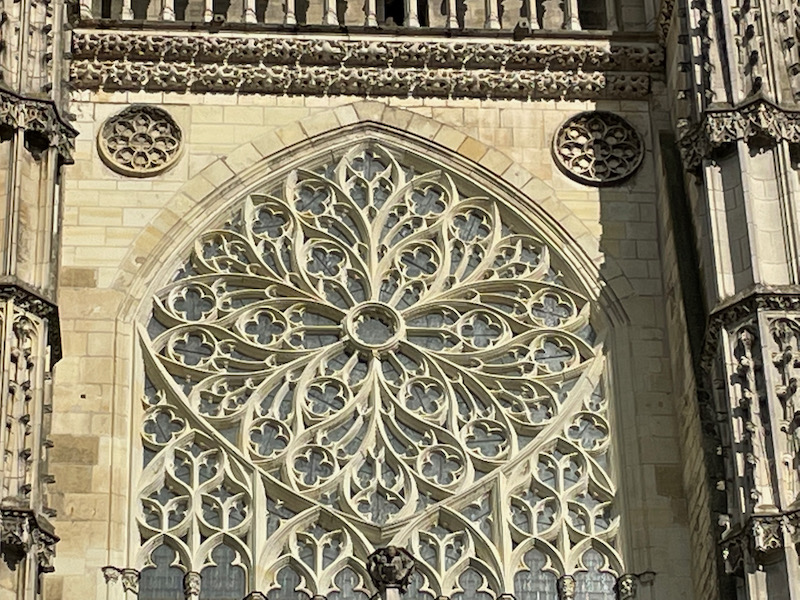
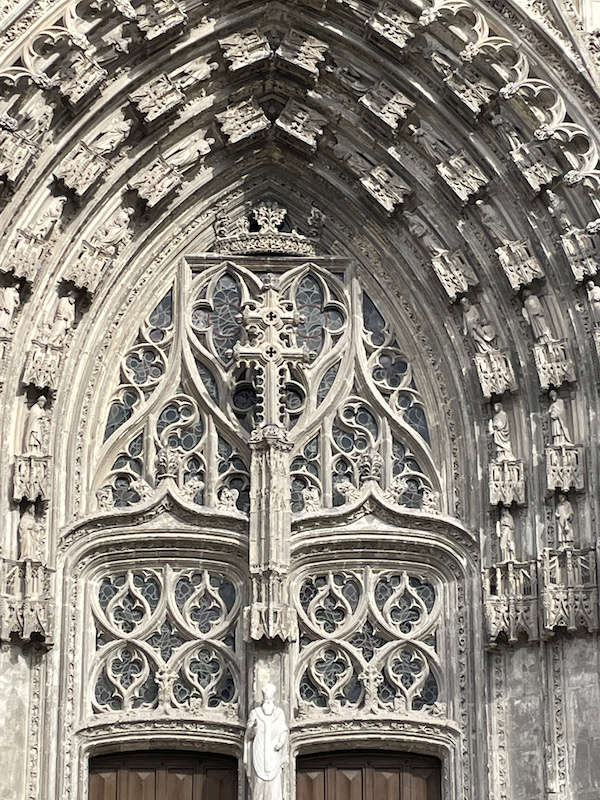
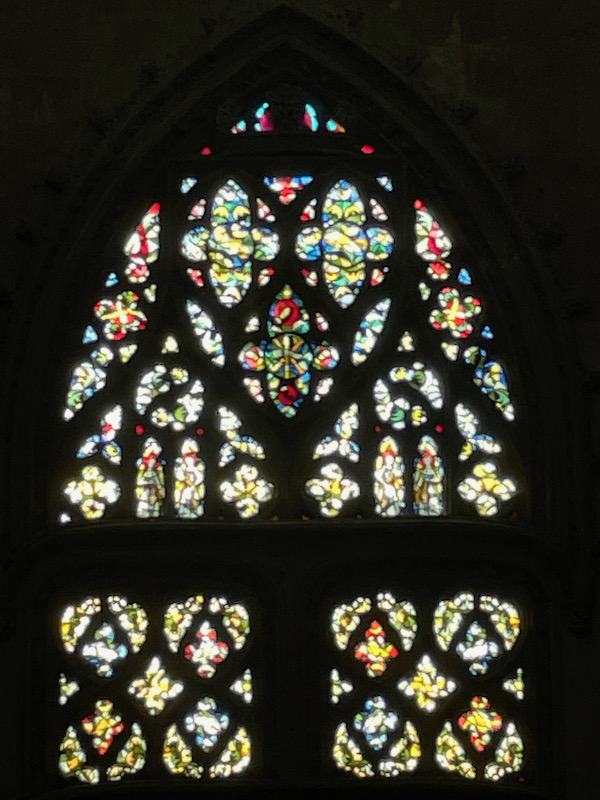
Inside, the nave looks very typical ... very high Gothic vaults and a nave with side aisles.
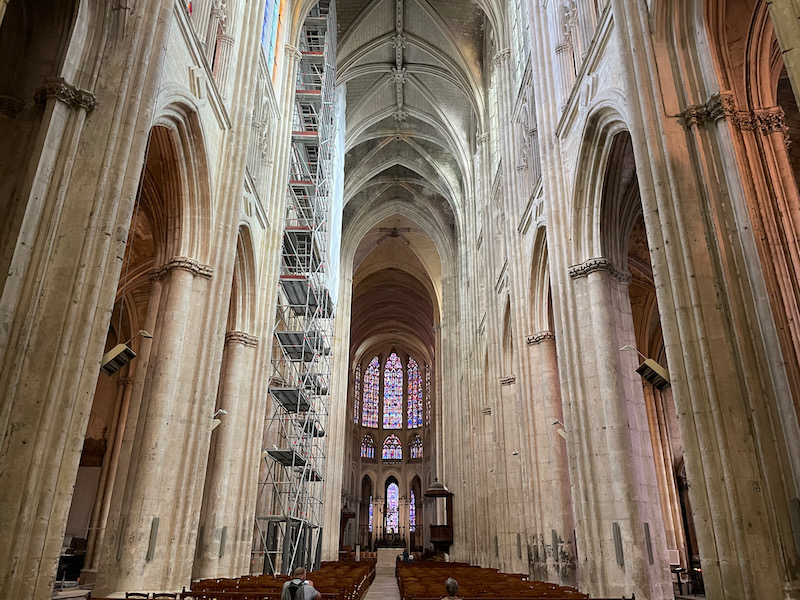
There is a small chapel with vestiges of a 14th century tomb, including some murals that have been restored.
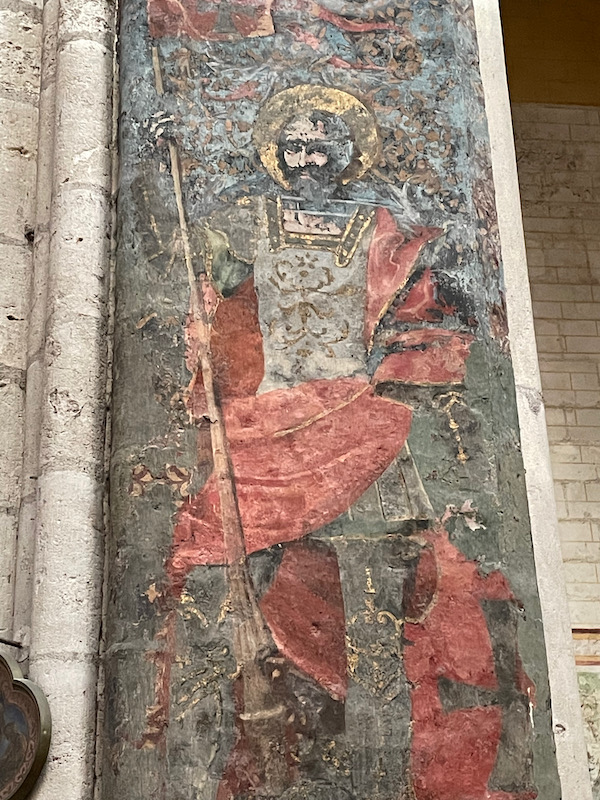
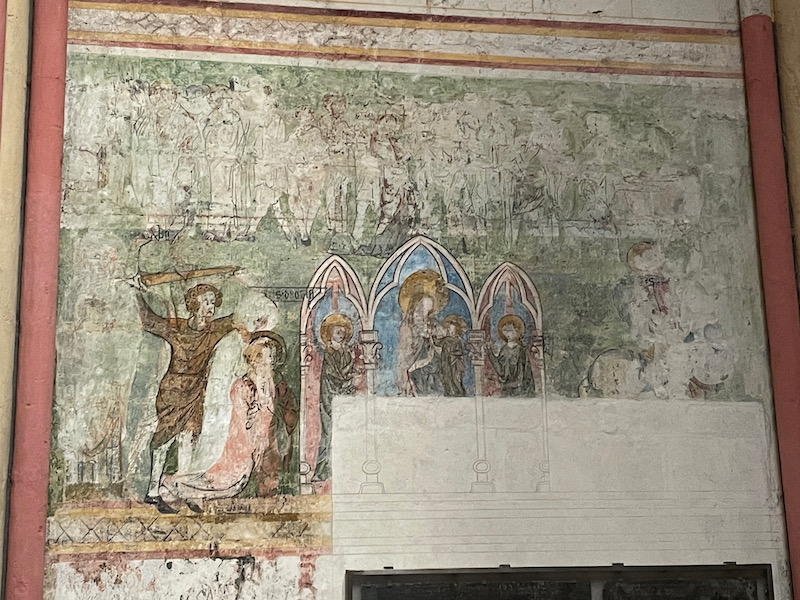
The nave also holds a monumental tomb for 2 of the children of King Charles VIII and Ann of Brittany. Made in 1506, the Italian style tomb is of marble. It is the tomb for Charles Orland, who died at the age of 3, and Charles, who died at just 26 days old.
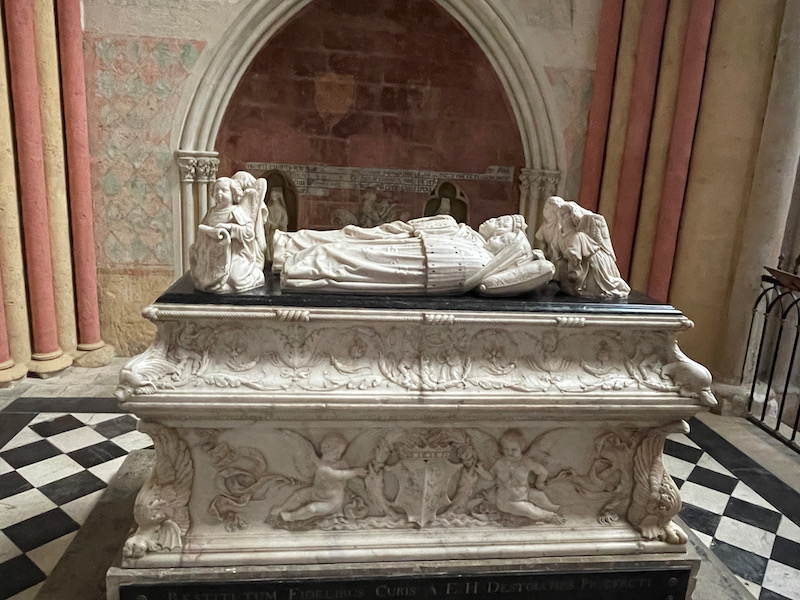
For me, the main draw in this church was the stained-glass windows, and there were LOTS of them. If you had a few hours, you could go through and understand each window, since the information provided on each and every window was amazing. However, I didn't have that kind of time, so I just had to pick and choose a few of them. To give you an idea of the sheer volume of stained glass .... a partial view of the apse.
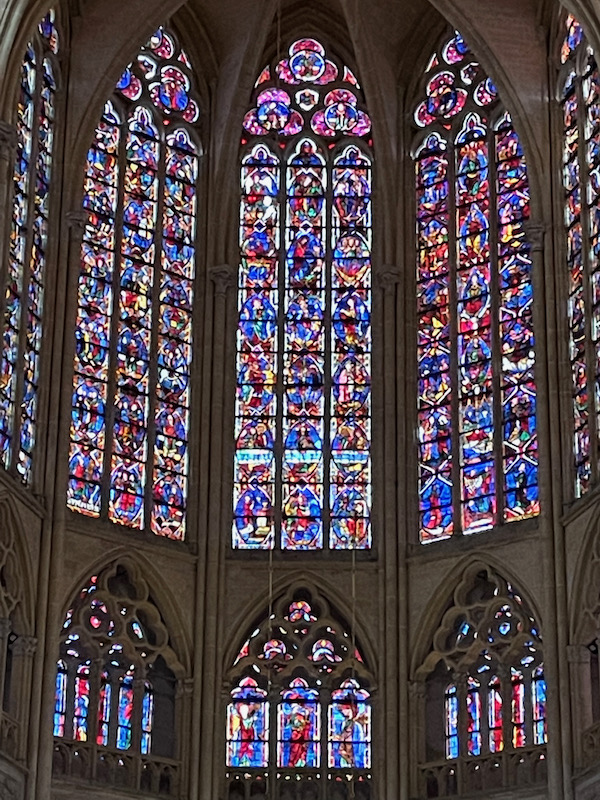
The West rose window and the windows below it are from the 15th century. You can see coats of arms below the people in the lower part, which are from the families that had donated money to complete the cathedral.

This is the North Rose window, who dates from the end of the 13th century. There is a description of each of the parts of it, but my camera (nor my eyes) were good enough to get see that level of detail. But just look at how many individual sections are in that rose window!
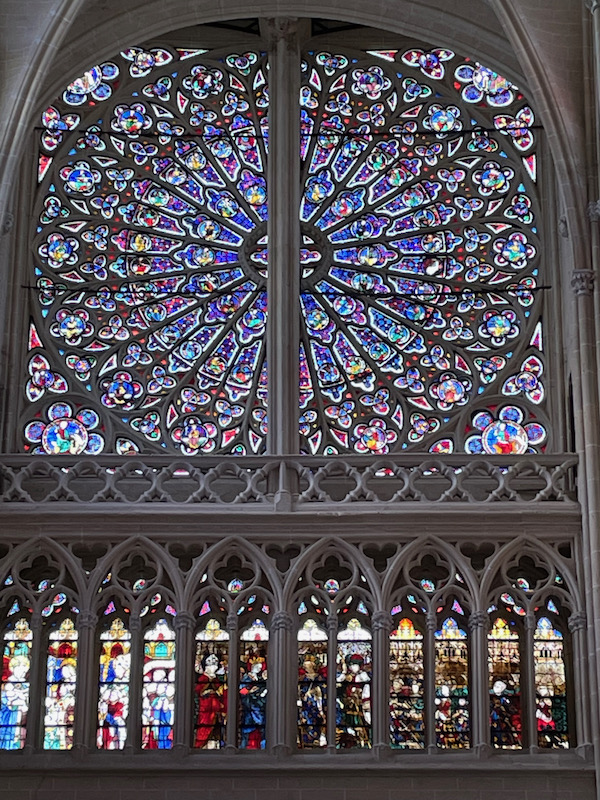
This is the Saint Martin window, completed in around 1300. First a full view, and then a couple sections where Saint Martin expels a demon who has possessed a person, and Saint Martin's body is taken by boat to the city of Tours.
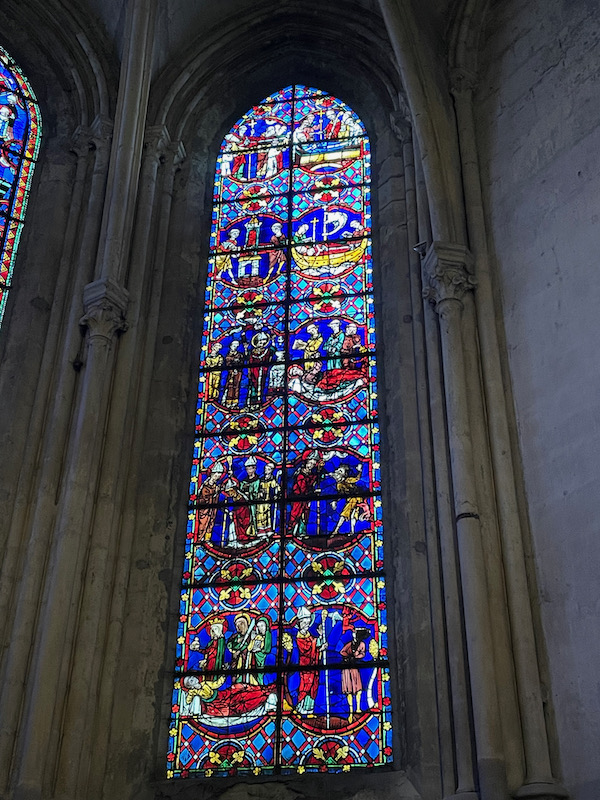
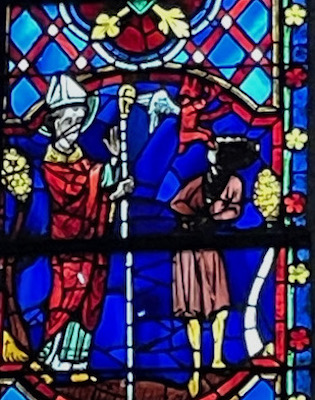
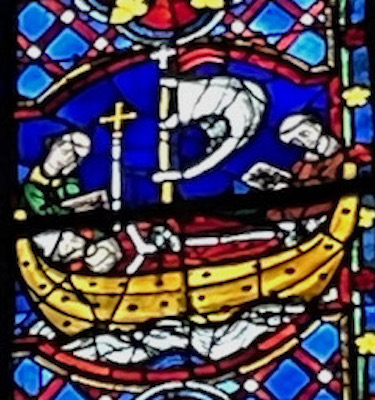
In addition to the 13th and 15th century windows, there are 200 m2 of contemporary stained-glass windows dedicated to Saint Martin in the North arm of the transept. This example shows common values and exchanges around the cult of Saint Martin with the presence of pilgrims in Tours, in front of the cathedral and in Candes-Saint-Martin, in front of the collegiate church.
